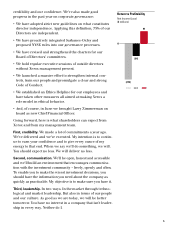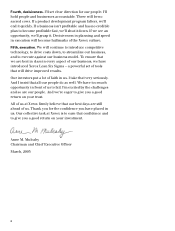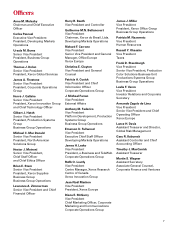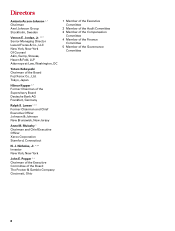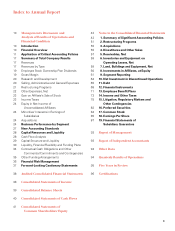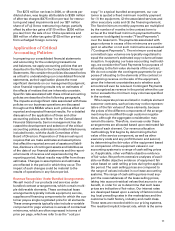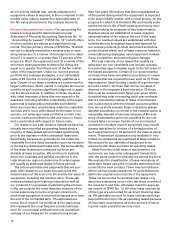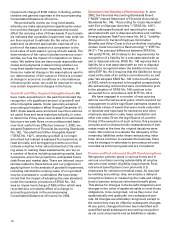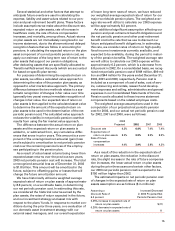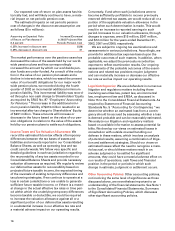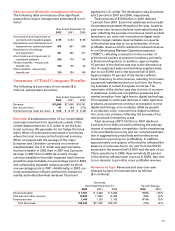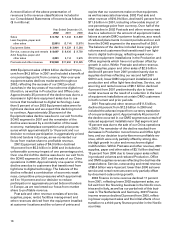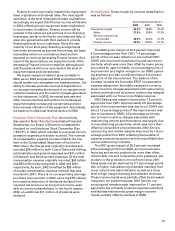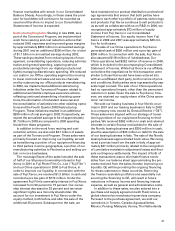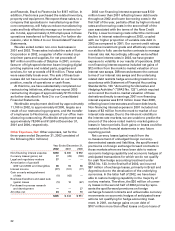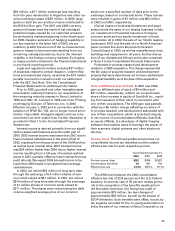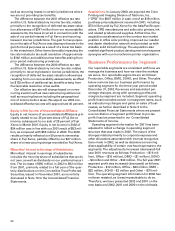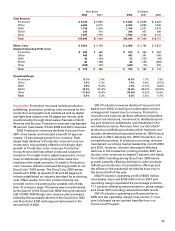Xerox 2002 Annual Report Download - page 17
Download and view the complete annual report
Please find page 17 of the 2002 Xerox annual report below. You can navigate through the pages in the report by either clicking on the pages listed below, or by using the keyword search tool below to find specific information within the annual report.
15
Several statistical and other factors that attempt to
anticipate future events are used in calculating the
expense, liability and asset values related to our pen-
sion and post-retirement benefit plans. These factors
include assumptions we make about the discount rate,
expected return on plan assets, rate of increase in
healthcare costs, the rate of future compensation
increases, and mortality, among others. Actual returns
on plan assets are not immediately recognized in our
income statement, due to the aforementioned delayed
recognition feature that we follow in accounting for
pensions. In calculating the expected return on the plan
asset component of our net periodic pension cost, we
apply our estimate of the long-term rate of return to the
plan assets that support our pension obligations,
after deducting assets that are specifically allocated to
Transitional Retirement Accounts (which are accounted
for based on specific plan terms).
For purposes of determining the expected return on
plan assets, we utilize a calculated value approach in
determining the value of the pension plan assets, as
opposed to a fair market value approach. The primary
difference between the two methods relates to a sys-
tematic recognition of changes in fair value over time
(generally two years) versus immediate recognition of
changes in fair value. Our expected rate of return on
plan assets is then applied to the calculated asset value
to determine the amount of the expected return on
plan assets to be used in the determination of the net
periodic pension cost. The calculated value approach
reduces the volatility in net periodic pension cost that
results from using the fair market value approach.
The difference between the actual return on plan
assets and the expected return on plan assets is
added to, or subtracted from, any cumulative differ-
ences that arose in prior years. This amount is a com-
ponent of the unrecognized net actuarial (gain) loss
and is subject to amortization to net periodic pension
cost over the remaining service lives of the employ-
ees participating in the pension plan.
As a result of actual asset returns being lower than
expected asset returns over the previous two years,
2003 net periodic pension cost will increase. The total
unrecognized actuarial loss as of December 31, 2002
is $1.8 billion. This amount will be amortized in the
future, subject to offsetting gains or losses that will
change the future amortization amount.
We have historically utilized a weighted average
expected rate of return on plan assets of approximate-
ly 8.8 percent, on a worldwide basis, in determining
our net periodic pension cost. In estimating this rate,
we considered the historical returns earned by the
plan assets, the rates of return expected in the future,
and our investment strategy and asset mix with
respect to the plans’ funds. In response to market con-
ditions during the prior three years, a re-evaluation of
our domestic asset investment strategy with our
external asset managers, and our overall expectation
of lower long-term rates of return, we have reduced
our weighted average expected rate of return for our
major worldwide pension plans. The weighted aver-
age rate we will utilize to calculate our 2003 expense
will be approximately 8.3 percent.
An additional significant assumption affecting our
pension and post-retirement benefit obligations and
the net periodic pension and other post-retirement
benefit cost is the rate that we use to discount our
future anticipated benefit obligations. In estimating
this rate, we consider rates of return on high quality
fixed-income investments currently available, and
expected to be available, during the period to maturi-
ty of the pension benefits. The weighted average rate
we will utilize to calculate our 2003 expense will be
approximately 6.2 percent, which is a decrease from
6.8 percent in 2002. On a consolidated basis, we recog-
nized net periodic pension cost of $168 million, $99 mil-
lion and $44 million for the years ended December 31,
2002, 2001 and 2000, respectively. Pension cost is
included as a component of cost of sales, cost of serv-
ice, outsourcing and rentals, research and develop-
ment expenses and selling, administrative and general
expenses in our Consolidated Statements of Income.
Pension cost is allocated to these income statement
components based on the related employee costs.
The weighted average assumptions used in the
computation of our projected net periodic pension
cost for 2003, and our actual net periodic pension cost
for 2002, 2001 and 2000, were as follows:
2003
Projected 2002 2001 2000
Discount rate 6.2% 6.8% 7.0% 7.4%
Expected rate of
return on plan assets 8.3% 8.8% 8.9% 8.9%
Rate of future
compensation
increases 4.0% 3.9% 3.8% 4.2%
As a result of the reduction in the expected rate of
return on plan assets, the reduction in the discount
rate, the slight increase in the rate of future compensa-
tion increases, the lower actual return on plan assets
during the prior three years and certain other factors,
our 2003 net periodic pension cost is expected to be
$150 million higher than 2002.
The estimated impacts on net periodic pension cost
of changes in the expected rate of return on plan
assets assumption are as follows ($ in millions):
Assuming a Increase/(Decrease)
Discount Rate of in 2003 Projected Net
6.2 percent Periodic Pension Cost
0.25% increase in expected rate of
return on plan assets $(11)
0.25% decrease in expected rate of
return on plan assets 11


